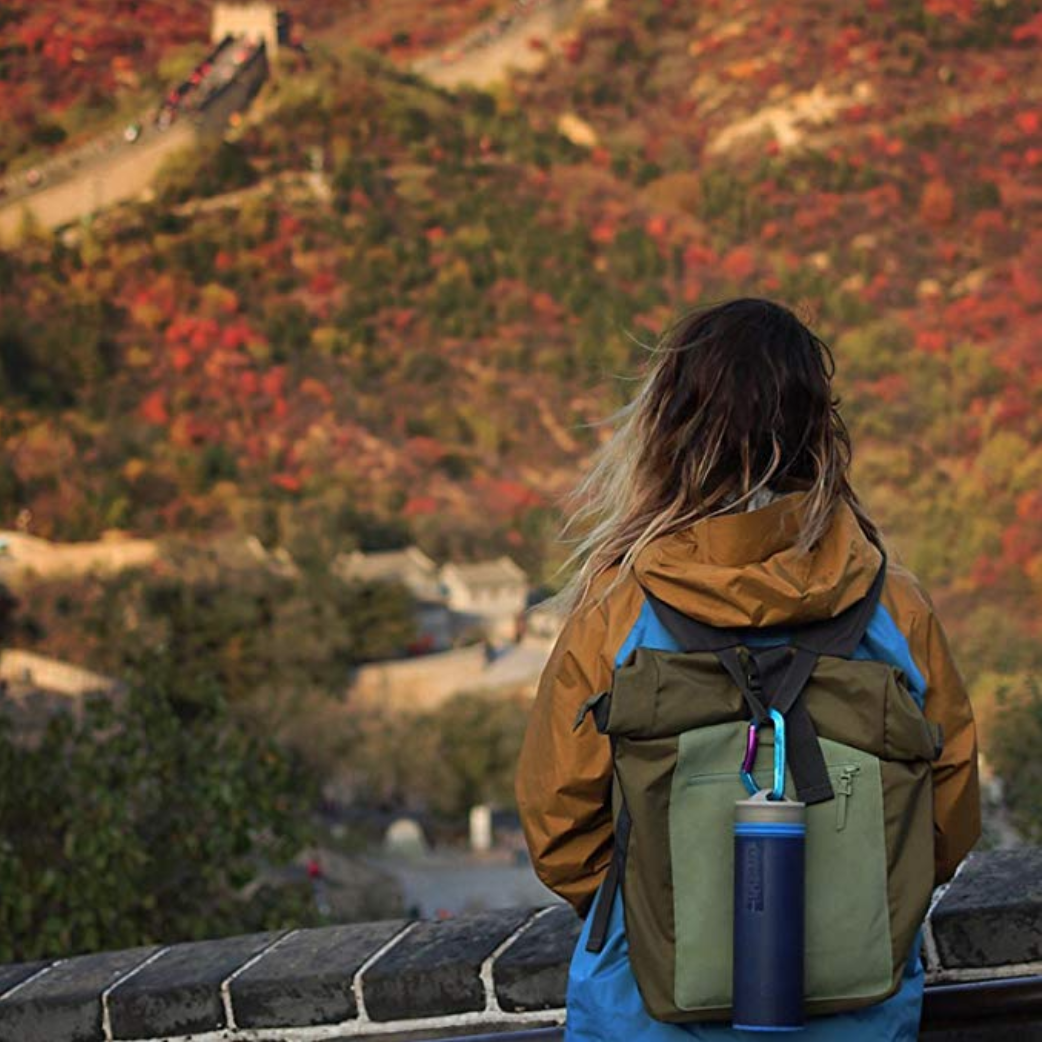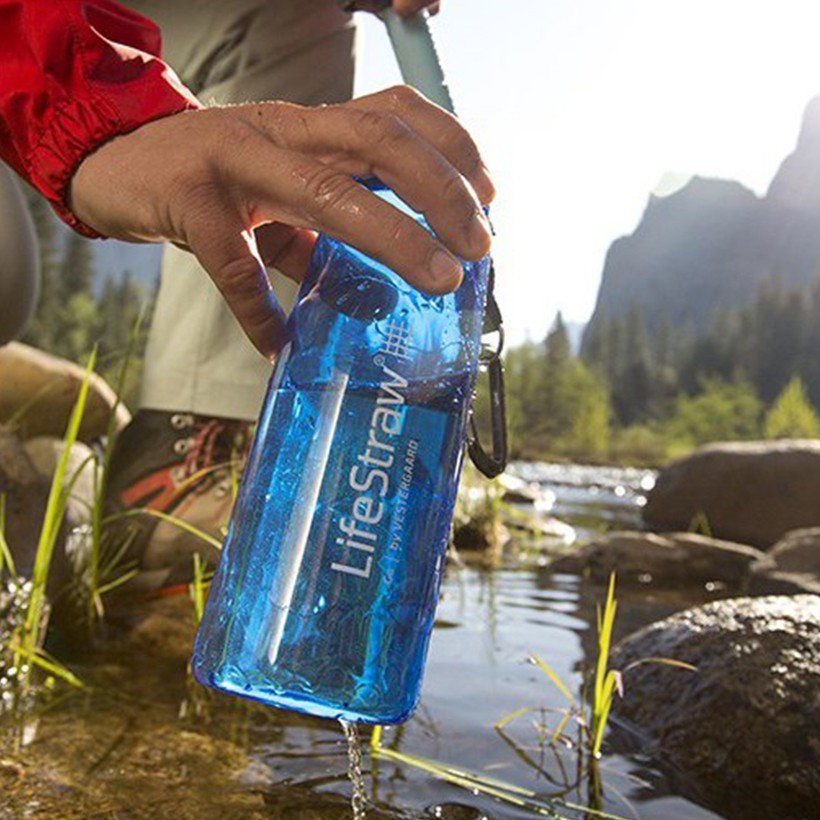Simple hacks to be eco friendly while traveling
Ecology is a very important subject to all travellers. We explore the world looking for beautiful, remote locations and meet people of different cultures and traditions. We seek incredible places that will make our jaw drop… But sometimes, we end up disappointed and sad. Sad because instead of seeing the sunset, we see the trash thrown on the beach; sad because we trip on empty plastic bottles on our hikes to astonishing waterfalls or because we swim with turtles surrounded by plastic bags in turquoise waters. We all want our planet to be clean but it is up to us to make it happen. As travellers, we hold the duty to spread awareness on the negative impact on the environment of pollution and on the use of plastic. Saving the planet is a process that requires each and every one of us to make changes to our daily routine and habits. Even taking small steps means we are moving forward. Here are 8 hacks to be eco friendly while travelling and in all circumstances.
1. Buy a reusable water bottle with built-in filter.
In Europe or USA, you can use reusable water bottles as drinking tap water is perfectly safe. However if you travel to Asia, South America or other remote destinations, it is not advised to drink the tap water. Which means that you will buy each day few bottles of water to stay hydrated and healthy. To avoid purchasing so much single use plastic, you can buy a bottle with an integrated filter that removes 99% of bacterias, viruses and protozoan cysts, as well as heavy metals and chemicals. Thanks to this, you will be able to safely drink water from the tap and won’t buy tons of plastic bottles.
Remember that you can take with you an empty reusable water bottle through airport security. Most of the airports nowadays have water fountains where you can fill in your bottle for free. This means that you wont need to ask flight attendants for water served in plastic cups.
↬ TIP : You can also fly with your own homemade food in reusable plastic containers. Lots of people are not aware of it and it’s a pity. The plane food is not very tasty and everything is served wrapped in plastic. You can prepare your own meal at home and take it on board with you, as long as it’s not liquid. For example soups, yogurts, jam or honey won’t be allowed if the quantity is bigger than 100 ml.
2. Say no to single use plastic in cafes and restaurants
You don’t really need this plastic straw in your drink, do you? Just remember to say it before ordering your drink. You can also carry a metal or bamboo straw with you and use it for your drinks.
Bring your own spoon and fork (or spork) when eating in cheaper cafes that might serve plastic cutlery.
Always take your own bag for grocery, souvenirs or anything else you might want to buy while on the trip. Those bags are few cm in diameter when folded and really take tiny space in your backpack or bag. Those hacks will help you to be eco friendly everyday at really low cost.
Sooner or later the single use plastic will end up in the ocean and have tragic impact on the marine life. Turtles eat plastic bags, because they mistake them for jellyfish. Fish swallow micro-plastic and die not being able to digest it. Seals get plastic rings stuck on their necks and they grow into their skin. The list goes on and on… And if that talks more to you: you use plastic, it ends up in the water, which ends up in a fish, which ends up in your belly. We can all help to prevent it from happening, saying no to single use plastic.
Behind the scene
By the way, the sunset above (the 1st picture) is beautiful isn’t it? It’s a memory that will stay for ever in our minds and hearts… Chasing the lights, we arrived on this forgotten beach riding our scooter in Vietnam. We were amazed and chocked by the beauty of this surreal sunset but the view of the other side was heartbreaking… The beach was covered with plastic and trash washed out by the ocean. It was hard to believed that people were living in such a magical place, ruined by the carelessness of mankind.
3. Pick us trash when on the beach or hiking
Jackson Groves from Journey Era has started the Adventure Bag movement and we think it’s one of the best things on Instagram. It inspires people to pick up a bag of trash while coming back from a hike, walk on the beach or any other outdoor activity. You can post a picture of your adventure bag and tag @adventurebagcrew to join the movement and inspire others. Its such an easy thing to do and has such a great impact!
Always remember: 1 adventure=1 trash/adventure bag
4. Try to eat less meat
Avoiding meat and dairy is ‘single biggest way’ to reduce your impact on Earth. The newest analysis shows that the meat industry uses 83% of farmland while producing 60% of agriculture’s greenhouse gas emissions. In another study: production of beef results in up to 105kg of greenhouse gases per 100g of meat, while tofu produces less than 3.5kg.
We do not ask you to go vegan or vegetarian. It is a unique choice and depends on individuals health and many other circumstances. But choosing vegetable based meal few times a week over a meat one, can already have positive impact on environment.
5. Support local hotels and businesses
That’s one of the easiest way of having positive impact: choosing local restaurants or hotels, staying in Airbnb’s over big chain hotels. This supports the local economy and has a direct impact on people’s lives. The money goes directly to them, helping the families and upgrading their standard of life. This is specially valuable in countries like Vietnam, Cambodia, Indonesia and others. Plus it gives you the possibility to get the real unique, experience, and get to know more intimately their way of living and traditions.
6. Do not support wildlife tourism in any form.
Wildlife attractions are a lucrative part of the booming global travel industry. This area of tourism known only from travel guides in the past, now influences and reaches us from thousands of social media photos everyday. People looking at instagram pictures with a tiger, elephant rides or kisses with dolphins, see the ‘fun’ and want the same experience during their travels. But with all the visibility social media provides, it doesn’t show what happens beyond the view of the camera lens. People who feel joy and exhilaration from getting close to wild animals usually are unaware that many of the animals at such attractions live a cruel and brutal life.
The elephants that carry people on their backs or pose with happy tourists have to go through a traditional and brutal weeks-long process of breaking their spirit while still very young called Phajaan in Thai. During this process the elephants are bound with ropes, confined in tight wooden structures, starved, and beaten repeatedly with bullhooks, nails, and hammers until their will is crushed. Then they are lead to so called ‘sanctuaries’ where they spend their miserable lives being chained and maltreated just for the pleasure of serving the tourists.
The tigers are drugged, their nails pulled out and trained in similar way, so they won’t attack people that want a cute picture with the 250 kg beast.
The small monkeys or other primates that tourists can take pictures with on streets of Bangkok, are captured while very young and watch their mothers being killed in front of them. Many die within weeks of being captured.
Visit National Parks
Examples like this can go on and on… We ask you to be a wise traveler and a good human. Every life matters and we are responsible for those who cannot speak for themselves. Animals feel pain, sadness and loss the same as we humans do. Next time you are on holidays, have this in mind when you’ll want to ride an elephant or a cute picture with a monkey.
I also recommend everyone to read the National Geographic article talking about wildlife tourism. It is truly an eye opening reportage.
If you dream of seeing the animals, choose a safari in a National Park of the country you are visiting. Like this you will make a little contribution to the preservation of wildlife and be able to observe the animals in their natural environment.
7. Reduce your flight’s CO2 footprint
Air travel is one of the more environmentally damaging activities. There are few things that you can do to minimize this negative impact:
Pay the carbon offset when booking a flight: there are websites where you can calculate the CO2 emission for your flight and compensate it by investing in environmental projects around the world.
↬ You can visit CarbonFootprint & CO2Logic for more information.
If possible pick a train or a car over a flight, specially on short distances.
Choose flight with less stopovers: about 25 percent of airplane emissions come from landing and taking off. Choosing direct flights reduces that.
8. Use biodegradable sunscreen
We all love sunbathing. We know however that the UV rays are dangerous to our skin. So to protect it we cover our bodies with sunscreens. But only few know that those creams contain chemicals that basically never dissolve in the ocean. And those chemicals are dangerous to the marine life. Up to 14,000 tons of sunscreen wind up in coral reef areas of the ocean every year, and scientists say that contributes to the ecosystem’s damage. Oxybenzone, a UV filtering ingredient commonly found in sunscreens, is the main ingredient that is harming the coral and completely changing the environment of our oceans.
When buying a sunscreen, read the labels and look for a brand that uses physical sunblocks such as zinc oxide or titanium instead of chemical ones.
Wait 15-20 min after applying the cream to get into the water, so your skin absorbs the products. The truth is that no sunscreen is 100% waterproof, so it will wash off into the ocean anyways. But the more gets absorbed into your skin, the less will end up in the waters.
Always remember:
We are only humans and we all make mistakes. Be kind to yourself and do not worry if you ‘slip’ by buying a plastic water bottle. The most important thing is to be aware and try your best. Educate yourself on the important matters and spread awareness with fellow travellers and people you encounter on your trips. Together with those simple hacks, we can become eco friendly make a difference!








Hi, this is a great blog and i always look forward to the information you post here. Thanks again
Thank you, we hope we helped you being more eco friendly 🙂